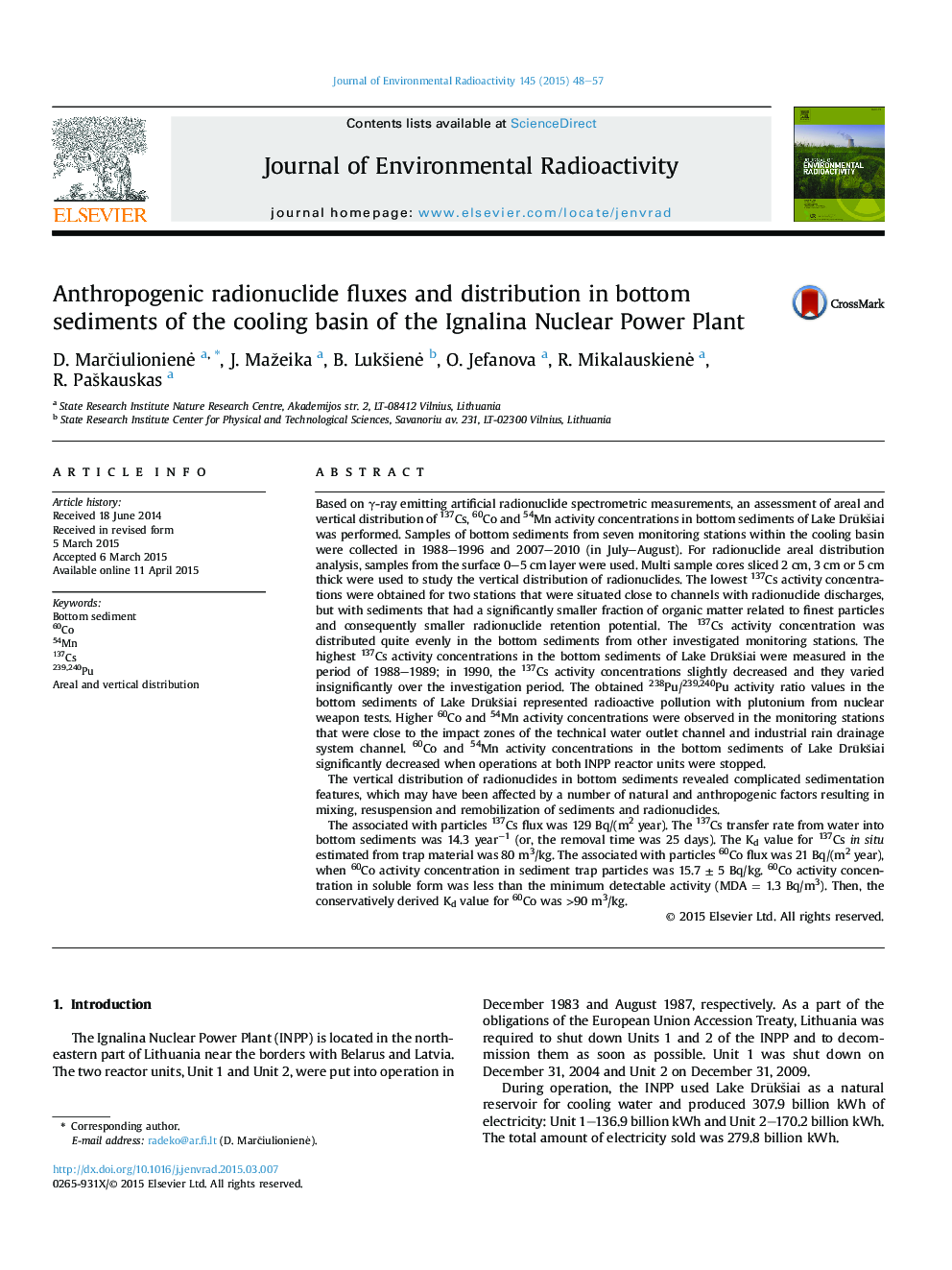| کد مقاله | کد نشریه | سال انتشار | مقاله انگلیسی | نسخه تمام متن |
|---|---|---|---|---|
| 1737872 | 1521588 | 2015 | 10 صفحه PDF | دانلود رایگان |

• Radionuclides activity concentrations in bottom sediments were studied during the entire operational period of the INPP.
• Activation products (60Co and 54Mn) were already observed in the impact zones of effluent channels in 1988.
• 137Cs was distributed quite evenly in the bottom sediments at the investigated monitoring stations.
• The highest activity concentrations of 137Cs in 1988–1989 may have been the result of inputs from the Chernobyl accident.
• The vertical distribution of radionuclides in bottom sediments revealed complicated sedimentation features.
Based on γ-ray emitting artificial radionuclide spectrometric measurements, an assessment of areal and vertical distribution of 137Cs, 60Co and 54Mn activity concentrations in bottom sediments of Lake Drūkšiai was performed. Samples of bottom sediments from seven monitoring stations within the cooling basin were collected in 1988–1996 and 2007–2010 (in July–August). For radionuclide areal distribution analysis, samples from the surface 0–5 cm layer were used. Multi sample cores sliced 2 cm, 3 cm or 5 cm thick were used to study the vertical distribution of radionuclides. The lowest 137Cs activity concentrations were obtained for two stations that were situated close to channels with radionuclide discharges, but with sediments that had a significantly smaller fraction of organic matter related to finest particles and consequently smaller radionuclide retention potential. The 137Cs activity concentration was distributed quite evenly in the bottom sediments from other investigated monitoring stations. The highest 137Cs activity concentrations in the bottom sediments of Lake Drūkšiai were measured in the period of 1988–1989; in 1990, the 137Cs activity concentrations slightly decreased and they varied insignificantly over the investigation period. The obtained 238Pu/239,240Pu activity ratio values in the bottom sediments of Lake Drūkšiai represented radioactive pollution with plutonium from nuclear weapon tests. Higher 60Co and 54Mn activity concentrations were observed in the monitoring stations that were close to the impact zones of the technical water outlet channel and industrial rain drainage system channel. 60Co and 54Mn activity concentrations in the bottom sediments of Lake Drūkšiai significantly decreased when operations at both INPP reactor units were stopped.The vertical distribution of radionuclides in bottom sediments revealed complicated sedimentation features, which may have been affected by a number of natural and anthropogenic factors resulting in mixing, resuspension and remobilization of sediments and radionuclides.The associated with particles 137Cs flux was 129 Bq/(m2 year). The 137Cs transfer rate from water into bottom sediments was 14.3 year−1 (or, the removal time was 25 days). The Kd value for 137Cs in situ estimated from trap material was 80 m3/kg. The associated with particles 60Co flux was 21 Bq/(m2 year), when 60Co activity concentration in sediment trap particles was 15.7 ± 5 Bq/kg. 60Co activity concentration in soluble form was less than the minimum detectable activity (MDA = 1.3 Bq/m3). Then, the conservatively derived Kd value for 60Co was >90 m3/kg.
Journal: Journal of Environmental Radioactivity - Volume 145, July 2015, Pages 48–57